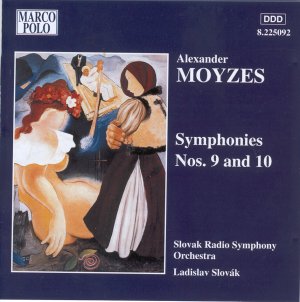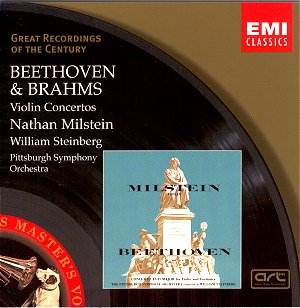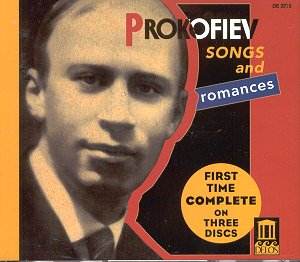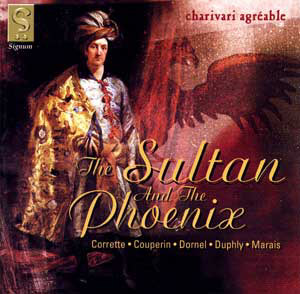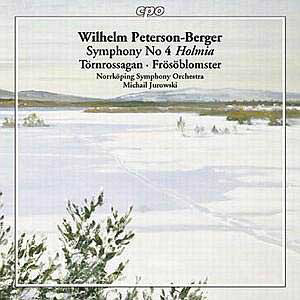 Composer: Wilhelm Peterson-Berger
Composer: Wilhelm Peterson-Berger
Works: Symphony No. 4 in A Major “Holmia” (1929), Tornrossagan (1934), Frösöblömster (1898)
Performers: Nörrköping Symphony Orchestra, Michail Jurowski (conductor)
Recording: CPO / Swedish Broadcasting Corporation, recorded 31/5 – 4/6 1999 in De Geer Hall, Nörrköping
Label: CPO
Wilhelm Peterson-Berger, a prominent yet often overshadowed figure in Swedish music, composed Symphony No. 4 in A Major, subtitled “Holmia,” in 1929. This work represents a pivotal moment in his symphonic output, as it is his penultimate symphony, preceding his Fifth Symphony by just four years. Peterson-Berger’s oeuvre is characterized by lyrical melodies and a penchant for folk influences, yet he often finds himself relegated to the margins of concert repertoire. This recording, featuring the Nörrköping Symphony Orchestra under the baton of Michail Jurowski, offers a timely exploration of his symphonic voice, though the results raise questions about the enduring impact of his musical ideas.
The performance itself is commendable; Jurowski leads the orchestra with clarity and precision, particularly in the symphony’s three movements. The first movement unfolds with a bright and forthright character, allowing the woodwinds to shine through the orchestral texture. The strings execute their phrases with a gratifying resonance, showcasing both technique and sensitivity. However, the lack of organic growth within the symphonic structure becomes evident as the listener progresses. The middle movement, which serves as both a slow movement and a scherzo, is played with a pleasant buoyancy, yet it does not convey a sense of narrative development. The lack of thematic transformation leaves the listener yearning for greater emotional depth, which is particularly pronounced when compared to the more innovative works of contemporaries like Nielsen or Sibelius.
The sound quality of the recording is exemplary, a hallmark of CPO’s production values. The engineering captures the orchestra’s dynamic range beautifully, with a crispness that allows individual instruments to be discerned even amidst full orchestral passages. The balance between sections is expertly managed, ensuring that the brass and percussion do not overpower the delicate nuances of the strings and woodwinds. This clarity is especially beneficial when engaging with the two additional works on the disc, “Frösöblömster” and “Tornrossagan,” both of which are superior to the symphony in terms of lyrical content and orchestration.
“Frösöblömster,” originally a solo piano piece transformed into an orchestral suite, displays a more mature compositional voice, where Peterson-Berger’s gift for melody truly flourishes. The lush orchestration and evocative themes are compelling, showcasing a distinct emotional resonance that the Symphony No. 4 lacks. Similarly, “Tornrossagan,” restructured from a ballet score, reveals a more adept handling of orchestral color and texture. These works not only redeem the disc but also provide a clearer window into Peterson-Berger’s artistic sensibilities, allowing listeners to appreciate his contributions to early 20th-century Scandinavian music.
While this recording of Symphony No. 4 provides an insightful glimpse into Peterson-Berger’s symphonic landscape, it is the surrounding orchestral suites that ultimately shine brighter. The performance is executed with precision and energy, yet the underlying musical inspiration of the Fourth Symphony often feels disappointingly muted. For aficionados of Scandinavian symphonism, this recording will be a valuable addition to their collection, yet it may not resonate as strongly with those seeking profound musical narratives. CPO’s commitment to preserving and presenting these lesser-known works is commendable, ensuring that Peterson-Berger’s voice, though perhaps quiet, continues to be heard in the concert hall.
